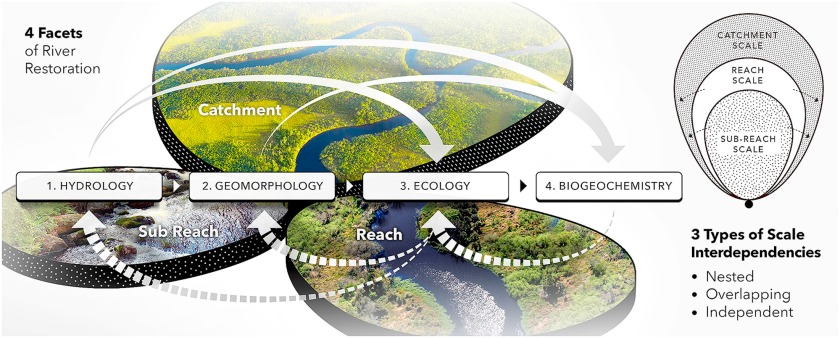
Authors
Although river restoration has increased rapidly, observations of successful ecological recovery are rare, mostly due to a discrepancy in the spatial scale of the impact and the restoration. Rivers and their ecological communities are a product of four river facets—hydrology, geomorphology, ecology and biogeochemistry—that act and interact on several spatial scales, from the sub-reach to the reach and catchment scales. The four river facets usually affect one another in predictable pathways (e.g., hydrology commonly controls geomorphology), but we show that the order in which they affect each other and can be restored varies depending on ecoregion and hydroclimatic regime. Similarly, processes at different spatial scales can be nested or independent of those at larger scales. Although some restoration practices are dependent of those at higher scales, other reach-scale restoration efforts are independent and can be carried out prior to or concurrently with larger-scale restoration. We introduce a checklist using the four river facets to prioritize restoration at three spatial scales in order to have the largest positive effect on the entire catchment. We apply this checklist to two contrasting regions—in northern Sweden and in southern Brazil—with different anthropogenic effects and interactions between facets and scales. In the case of nested processes that are dependent on larger spatial scales, reach-scale restoration in the absence of restoration of catchment-scale processes can frankly be a waste of money, providing little ecological return. However, depending on the scale-interdependence of processes of the river facets, restoration at smaller scales may be sufficient. This means that the most appropriate government agency should be assigned (i.e., national vs. county) to most effectively oversee river restoration at the appropriate scale; however, this first requires a catchment-scale analysis of feedbacks between facets and spatial scale interdependence.







